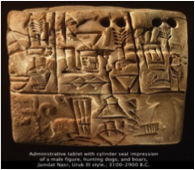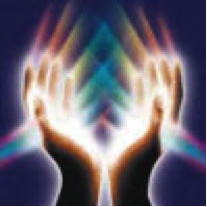
Black magic, White magic!!! There are two ways to look at magic, one is mythological and the other is cultural that depends on who is peeking into the mystical and forbidden knowledge.
Listen to the article on our youtube channel
The long hidden secrets known only by very few who dared gazing into the deep dark crypt within their haunted souls, craving for power to control their fellow man confiscating his freedom and extraditing his soul to the Devil.
The aim behind this introduction is an attempt to relate events and records from the past with what became a cause to what affected our human existence on this planet.
Our reader will eventually reach to a conclusion that everything from the past is related to whatever the future conceives.
I personally trace back mythology, spirituality, faith and culture to the ancient book of Enoch which I regard to be the primary reference of all events that took place from henceforth.
There in the book of Enoch one will find references to what became the art of magic, mythology, legends, spirituality and much more.
I also believe that the author of the book of Enoch is that same famous author of the Emerald Tablets who is Thoth, Enoch, or Idris nicknamed Al Khodor (the green man), who is also known by many other names in every ancient culture ever existed.
What is magic, where did it originate from and when, these legitimate questions are what we aim to find answers to in this article.
Most of us are aware of the existence of Magic, but very few of us know the details we are about to unveil in  what we hope will be an illumination to our reader’s minds and food for their thoughts.
what we hope will be an illumination to our reader’s minds and food for their thoughts.
Magic is as ancient and old as humanity; it dates back to Sumeria and afterwards Babylonia, in fact the earliest record that can be tracked historically goes back to 26th c. BC from North Syria and it contains nine incantations written by the first named author in history, Ur-Gibil, who was also a scribe, he personally wrote and signed the text himself. This makes it one of the earliest if not the earliest magical literary manuscripts written signed and autographed ever known to us.
Having mentioned that, one needs to know that there is over 800 magical manuscripts from all continents with a time span of over 4,500 years ago.
The magical collection consists of 654 incantation bowls and jugs from Near East, dated between 5th and 7th c. AD. Most of it is bowls with writing inside it in ancient Aramaic and Hebrew which is protection incantations against demons, with about 200 quotes from the Bible in Hebrew. Some over 90 of these are not found on the Dead Sea Scrolls, which makes them even earlier from the original text of the Old Testament.
The bowls are regarded to be Sassanian as well as Jewish heritage and a witness to the Masoretic foundation period of the Hebrew Bible. It also has examples of HECHALOT or Jewish mystical texts, as well as part of the Shema prayer or extracts from the MISHNA. There is also named Jewish rabbis, demons and information about Jewish legal practice.
Most of the scribes recorded were of Jewish origin while most of the clients were Persians, since greater Mesopotamia was part of the huge Sassanian Empire. Most of the 2,000 incantation bowls known came from Iran and Iraq, including parts of Jordan, Lebanon, Syria and Turkey, as well as Egypt, even Uzbekistan on the Empire’s Eastern frontier, attesting to the vast geographical extent of both the Sassanian Empire and the incantation texts.
Ancient Mesopotamian sorcery and magic consisted of two types: prophylactic or therapeutic magic, the prophylactic was mainly for protection against evil and demons while the other was to heal from all sorts of illness which was considered by the ancients as of demonic origin. What is fascinating in this subject is the fact that by observing the modern practice of sorcery and witchcraft in that same region (near the Middle East) one cannot help but notice a remarkable similarity and resemblance to the ancient practice of ancient Mesopotamia. For example: fluid was and still is regarded as one of the major tools used to enchant or cast any type of magical spell on a victim in both forms of ancient and modern practice of magic, by obtaining a fluid generated from the body of a specific target, being a semen or a sweat, scent, blood not forgetting hair. Any DNA carrier of that specific target would be applicable against him since it would be tied with him even when separated; these were referred to as the KA compounds.
There was a belief that if one places semen of a dead man in his grave beside him and cast specific spell one would control that dead man’s spirit even after his death.
Another method of practice was spittle which was regarded as important in ancient sorcery.
It is mentioned in several well known anti-witchcraft texts such as the Maqlû which hints to spittle as being of important ingredient in practice whether it was the sorcerer’s own or that of a specific victim. Quotes from the text:
lumun úh nadê ana amēli la t.ehê so that the evil of the spat spittle will not approach a man (KAR 72 r. 5, and 11; cf. Or 39:134ff.)
ru-su-ú-ki up-šá-šu-ki hul.meš la te.meš-ni Your spittle, your evil plans shall not come near me (Maqlû III:156-157).
muš-te-piš-tu te-pu-šá-an-ni…úh.mu il-qu-ú The sorceress, who enchanted me…who took my saliva… (Maqlû I:130,132)
Although, these examples go back the first millennium, the association of spittle with sorcerers and sorcery is not limited to this period. It is also present in older anti-witchcraft texts.
Spittle is often referred to as venom in ancient cuneiform texts. In fact, it was common to regard witches as manipulative and venomous at the same time which suggests their resembling to snakes which spits venomous poison on its victims.
 Therefore, we can conclude that spittle had major applications, one is using the spittle of the sorcerer against a victim and the other is using the spittle of the victim against him/herself.
Therefore, we can conclude that spittle had major applications, one is using the spittle of the sorcerer against a victim and the other is using the spittle of the victim against him/herself.
Another tool was used in magic and that is a description of a victim or a situation in any citation which also suggests the application of psychological effect to influence their victim.
In erotic magic there is usually an invocation of a strange creature said to dwell in Ishtar’s heart, or sometimes in her lap, it has two horns and a tail, and it is role is to influence a woman’s mind about a man and change her feelings towards him, it was called i/erēmum, some legends associated with a scorpion.
It’s noticed that magic was a tool to early civilizations to tackle social and health issues whether it was approached by the good and evil concept or the well being of the community.
Magic and religion did stroll steadily side by side since the dawn of civilization, when religion was attributed to a unique act in regards to supernatural’s it was categorized as a miracle, but when it was attributed to magic is was categorized as evil and work of the devil.
Later in time alchemy started replacing magic then science replaced alchemy.
Conclusion: religion, magic, and science are all connected from the point of view of having them all used as instruments of early and modern civilizations to answer questions of the unknown and help bring a better meaning to our existence on earth.
Our visitors are invited to comment on this article and participate in creating a fruitful debate to enrich our knowledge.
Adam El Masri







